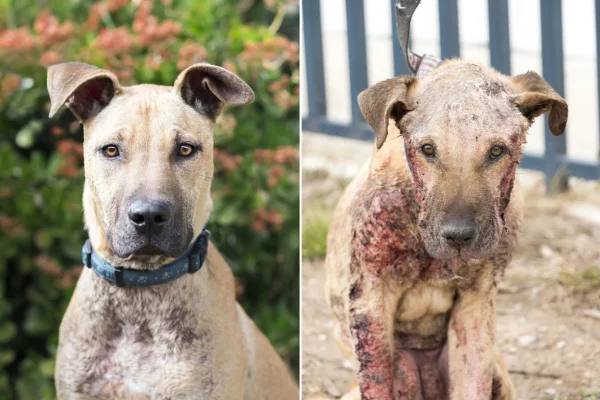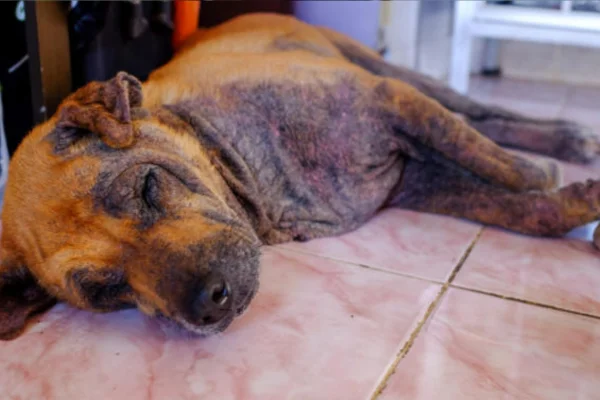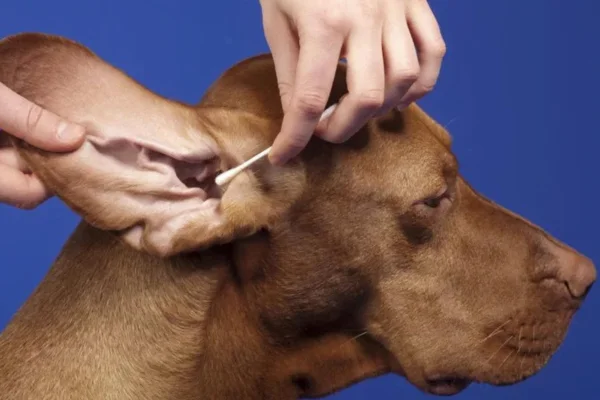Demodectic mange in dogs
Understanding the Symptoms and Treatment of a Complex Disease
Demodectic mange - The health of our dogs is a priority for any responsible guardian. However, even with all the care we take, some diseases can arise unexpectedly, and it's essential to be prepared to deal with them properly.
Demodectic mange is one of those conditions that can be frightening, but with proper understanding and treatment, you can ensure the well-being of your four-legged friend.
What is Demodectic Mange?
Demodectic mange, also known as demodicosis, is a skin disease caused by mites of the genus Demodex. These tiny parasites live naturally on the skin of healthy dogs, especially in areas rich in hair follicles, such as the face, paws and chest area. Under normal conditions, the mites coexist harmlessly with the host.
However, when the dog's immune system is compromised or there is a genetic predisposition, these mites can proliferate uncontrollably, leading to the development of demodectic mange.
Causes and Risk Factors
Demodectic mange is not a contagious disease between dogs or from dogs to humans, which differentiates it from other forms of mange. The development of the disease is closely linked to the ability of the dog's immune system to keep the mites under control. Puppies, elderly dogs or those with a weakened immune system, whether due to illness or stress, are more likely to develop the condition.
Certain dog breeds also have a genetic predisposition to demodectic mange. Breeds such as the English Bulldog, Shar Pei, German Shepherd and Dachshund, for example, are more likely to develop the disease, especially in its generalized form.
Types of Demodectic mange
There are three main forms of demodectic mange, each with different characteristics:
- Localized demodectic mange: This is the most common and least serious form of the disease. It affects limited areas of the body, such as the face or paws. This form is usually seen in puppies and, in many cases, resolves spontaneously as the animal's immune system matures.
- Generalized demodectic mange: As the name suggests, this form affects several parts of the body and can be quite severe. Dogs with generalized demodectic mange have extensive lesions, hair loss in large areas and secondary skin infections. This form of the disease requires more intensive treatment and constant veterinary monitoring.
- Demodectic scabies: This form is specific to the paws and is considered one of the most difficult to treat. Foot mange can be extremely painful for the dog, causing swelling, redness and sores on the paws.
Demodectic mange symptoms
The symptoms of demodectic mange can vary according to the severity and extent of the mite infestation. In milder cases, the owner may notice isolated areas of hair loss, usually without itching. These areas can appear on the face, around the eyes or on the paws.
In the most severe cases, the disease can spread to large areas of the body, causing large-scale hair loss, redness of the skin, scaling and even open sores due to secondary infections. Itching, although not a primary symptom of demodectic mange, can appear if there is a secondary bacterial infection, which is common in generalized cases.
Diagnosis
Demodectic mange is diagnosed by a veterinarian, usually through a detailed clinical examination and skin scrapings. These scrapings are analyzed under a microscope to identify the presence of mites Demodex. In more complex cases, it may be necessary to carry out a skin biopsy or other tests to rule out other dermatological conditions.
Demodectic mange treatment
The treatment of demodectic mange depends on the severity of the condition and the dog's general health. It's important to note that the aim of treatment is to control the mite population and treat any secondary infections, rather than to completely eradicate the mites, which is practically impossible.
- Topical Treatment: In localized cases, treatment may involve the application of topical medications, such as specific ointments or lotions that help to reduce the mite population and heal skin lesions. Therapeutic baths with special shampoos may also be indicated to help the skin recover.
- Systemic treatment: In generalized or severe cases, systemic treatment may be necessary. This includes the use of oral or injectable medications that help control the proliferation of mites throughout the body. Antibiotics may also be prescribed to treat secondary bacterial infections.
- Additional Care: Management of demodectic mange can also include strengthening the dog's immune system. This can be done through a balanced diet, specific supplements, stress reduction and, in some cases, changes to the dog's living environment.
Prevention and Control
Preventing demodectic mange can be challenging, especially in dogs with a genetic predisposition. However, keeping your dog's immune system strong is the best line of defense against developing the disease. This includes proper nutrition, parasite control, regular visits to the vet and, of course, lots of love and care.
If you know that your dog belongs to a breed predisposed to demodectic mange, it's important to pay attention to any early signs of the disease, such as small areas of hair loss or skin irritation. Early diagnosis and prompt treatment can make all the difference to your pet's recovery.
Conclusion
Demodectic mange in dogs is a condition that, although worrying, can be managed effectively with the help of a vet. Understanding the causes, symptoms and treatment options is fundamental to ensuring that your dog receives the necessary care and can lead a healthy and happy life.
Always remember that each case is unique and treatment must be adapted to your dog's specific needs. Don't hesitate to seek professional advice at the first sign of skin problems, as early care and attention can prevent complications and ensure the well-being of your canine companion.
Demodectic mange may seem like a complicated condition at first glance, but with knowledge and quick action, it is possible to help your dog successfully overcome this disease.










